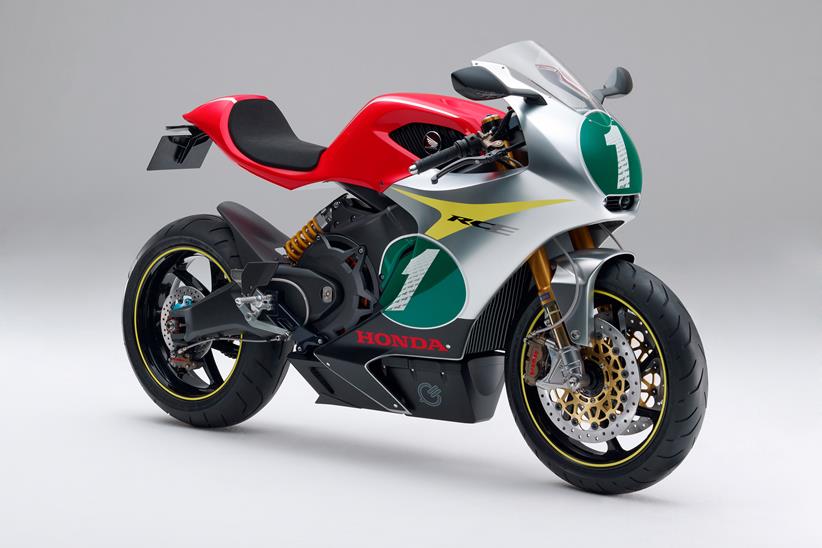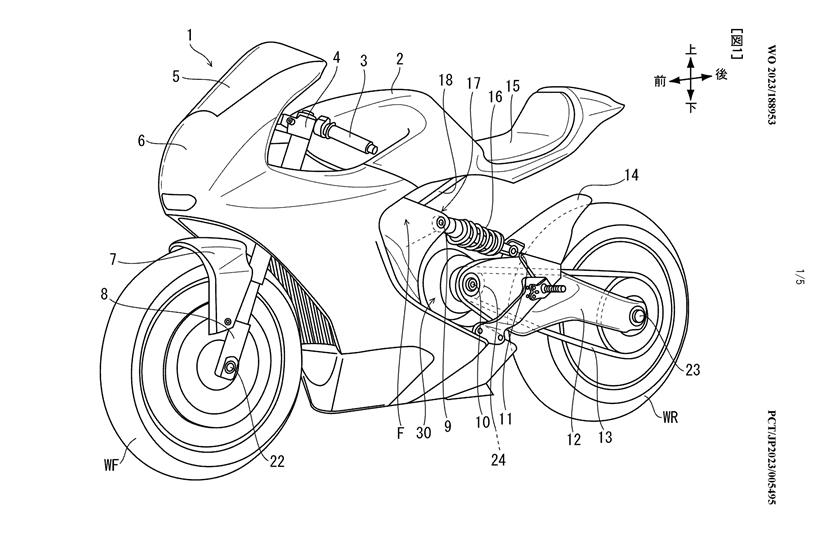Going back to the future: How Honda’s 12-year-old RC-E sportsbike concept is influencing the bikes of tomorrow
Honda stole the 2011 Tokyo Motor Show with a concept electric motorbike that still looks fresh 12 years later. Although the RC-E was never brought to production, it appears to still be influencing Honda’s design process – with fresh patent applications suggesting it’s being used in the development of a range of high-performance electric bikes.
When the RC-E was first shown electric bikes were still seen as something manufacturers knew they needed to be keeping an eye on, but not an urgent requirement.
Today the landscape couldn’t be more different, with rising fuel costs and plans to ban the sale of combustion-engined cars and proposals for similar legislation for bikes. Honda have already stated their intention to have at least 10 electric bikes in their range by 2025, including three machines with performance equivalent to mid-displacement petrol models.
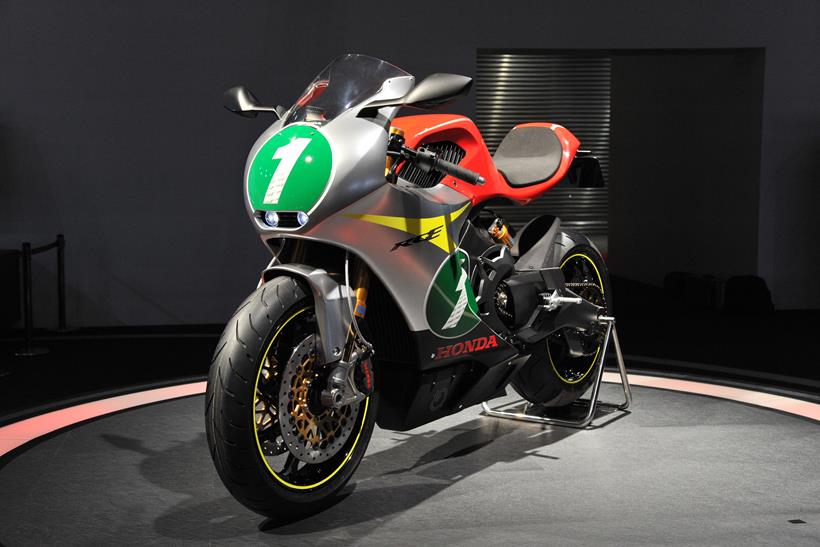
The new patent application suggests that the same ideas that led to the RC-E will be adopted in at least one of those bikes. The intercepted document gives us the first look under the RC-E’s skin and elaborates on a more compact rear suspension system that’s intended to give designers increased freedom when it comes to external appearance and internal packaging.
The design also fits in with teaser images released alongside Honda’s electric bike plans a year ago, suggesting that, despite the concept’s age, the RC-E’s thinking may yet be a core element of the company’s electric future.
The new patent is specifically related to the configuration of the bike’s rear suspension, which differs slightly from the original 2011 RC-E concept.
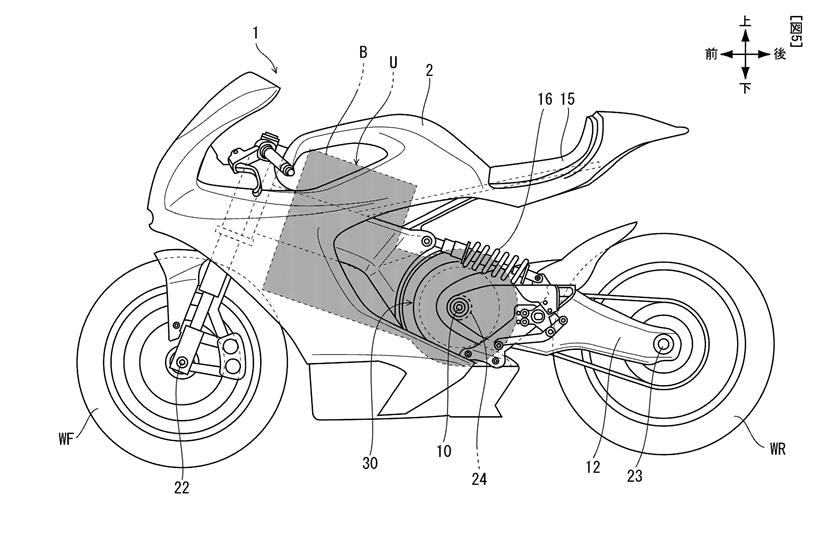
The Tokyo show bike had a central rear shock, directly connected from the top of the swingarm ahead of the wheel to a bridge between the frame rails above the large electric motor.
The patent shows an evolution of the design using a more compact motor that, while still far larger in diameter than that of most electric bikes, is slimmer than the RC-E’s.
That means there’s space to offset the rear shock to the left and to bolt it directly to the left-hand frame rail, eliminating the need for the original RC-E’s upper shock mount.
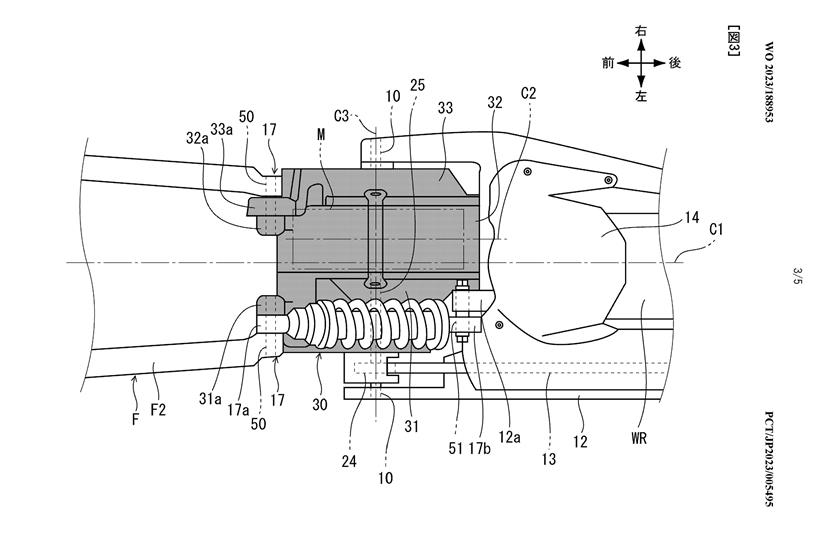
Just as important as what’s new, though, are the elements that are shared with the original. For example, the large motor – with its output shaft running around the swingarm pivot to maintain a constant drivechain tension –is still there.
So is the idea of a half-frame, with the electric motor’s aluminium casing playing a structural role as the rear section of the chassis. The patent also gives us the first look at the RC-E’s battery layout, with three differently shaped battery packs inside the bodywork.
Although the teaser images Honda released last year for its trio of larger electric models didn’t include a sportsbike – showing the silhouettes of a cruiser, a naked roadster and a big scooter – the new bikes’ outlines hint at elements of the RC-E’s thinking in their design.
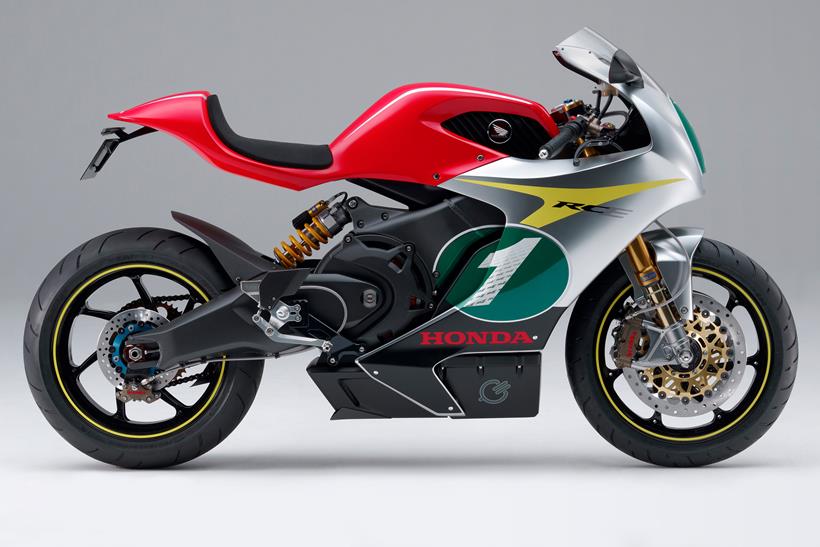
Most notably, all three of them appear to have a large, barrel-shaped component, which is surely the motor, mounted in exactly the same position as the RC-E’s motor. Logically, that suggests the RC-E’s frame design and battery layout may be adopted, explaining why Honda’s R&D department is still filing new patent applications related to that bike – 12 years after it was first unveiled.
Honda RC-E influences
- Spot the difference: The new patent shows a motorcycle that’s almost identical to the 2011 RC-E concept, suggesting that ideas from that prototype are still being worked on now.
- Modular battery design: The large, barrel-like electric motor is a key carry-over idea, and one that can also be seen in more recent teaser silhouettes of Honda’s planned middleweight electric models.
- Battery power: The RC-E patents show three batteries. The two main ones are mounted in the frame, one extending up into the ‘tank’ area, the other dropping below where an engine would normally be. A third battery pack – longer and slimmer – is mounted in the belly pan.
- New back end: The rear suspension is the main difference between the patent and the original RC-E, with the shock shifted to the left, alongside the motor, to create a more compact layout and a direct path for suspension forces between the rear wheel and the steering head.
- Constant tension: With the output shaft aligned with the swingarm pivot, the drivechain tension will remain constant throughout the rear suspension travel.
